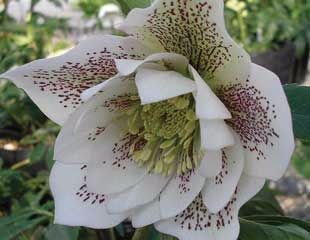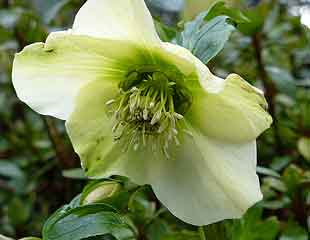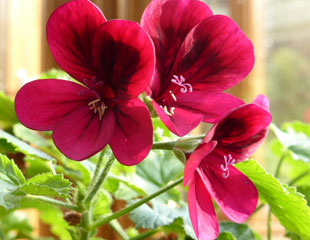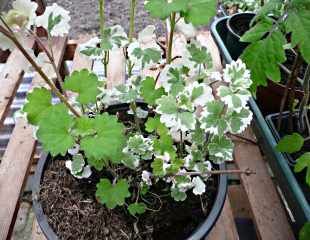Lets talk Hellebores
Posted on
 |
 |
Losts of tips about growing Hellebores and more information about where and when to plant Hellebores, preferred growing conditions, treating Hellebore black spot and a comprehensive guide to Hellebores. |
Posted on
 |
 |
Losts of tips about growing Hellebores and more information about where and when to plant Hellebores, preferred growing conditions, treating Hellebore black spot and a comprehensive guide to Hellebores. |
Posted on
 |
 |
|
Harlow Carr looking spectacular with the garden illuminated; a blaze of colour for Christmas. The path along side the lake is full of illuminations in the trees, and the stream appears ethereal with the different lights and takes on an ultra violet glow. Unfortunately, just too tricky for me to capture as my night photography and camera are just not up to it, but I managed a few passable images, and there are also a couple of photos kindly supplied by RHS, all of which give some idea as to how the garden looks. As soon as it turns dusk the lights will illuminate the garden. I was really impressed how lovely the garden looked, and I think it would be great for little ones as well. The show starts today23 November and is on until 30.12, three evenings per week Thursday, Friday and Saturday, and during which time Betty's tea room is open late, an added treat. There is more information on the RHS Harlow Carr web site along with other Christmas events and this is definately worth a visit. |
|
 |
 |
 |
 |
Posted on
|
It's not to late to plant Allium bulbs for a great spring display. In the right place, Alliums are low maintenance and will return reliably every year and are surely one of the most stylish plants for a border, illustrated by the images. Alliums like a sunny spot with well drained soil, which means they are unhappy on wet boggy soil especially over winter, which can cause the bulbs to rot. If you do not have ideal growing conditions Alliums can be raised in containers for a patio display, or place the containers in the borders. Alliums are wide ranging in size, from the quite small suitable for the front of the border such as Chives which the bees love (2nd image) and A. Moly, which is a bright yellow variety, both of which grow to around 30cms. Chives make a great edging plant, fodder for us and the bees. Amongst the taller varieties Allium Cristophii (illustrated 3rd image), spectacular with it's spikey flower heads and A. Globemaster one of the taller varieties over 1m. Alliums need to be planted in early Autumn so from September up to mid/3rd week October is best. Buying and planting as bulbs is much cheaper than buying as plants next spring. Like all bulbs the rule of thumb is to plant 4x the depth of the bulb, and if you are container planting a deeper pot is best. There are also unusual varieties such as Nectaroscordum siculum, (6th image) technically not an Allium, but often sold as one. Alliums look great planted on mass, as in the images 4 & 5, which is in an RHS garden, but most of us don't have that much space. In smaller gardens Alliums can be used to great effect as a theme, planted in groups,reoccurring maybe 3/4 times, will give a border real style. Taller varieties may need staking, especially in exposed areas. Allium are easy to grow and make a fabulous show. Good value for money as they will return and flower year after year with very little attention. The leaves on Allium are not attractive, especially after flowering and traditionally Allium are planting with companions to cover up the leaves such as Achillea Mollis or Euphorbia. For more about growing Alliums, information about spring and autumn flowering Alliums. An image gallery of various types of Allums and planting combinations. More images and growing tips about Alliums The Sunday Gardener has over 200 pages of gardening advice and tips. |
|
Posted on
|
There are two good reasons for overwintering plants. Firstly, for some tender plants it is a necessity and I have in mind here, especially in more exposed gardens, Tree ferns, Canna lily, and some varieties of Agapanthus. The other reason is to nurture through the winter plants which would usually be treated as annual bedding and thrown away. Commonly called Geraniums, Pelargonium will survive a winter under glass. In cold areas they are best in an unheated porch or conservatory, in milder areas they will be fine in the greenhouse. Geraniums need light, little water and cutting back will encourage the plant to bush out more in the spring as often over the summer Geraniums can become leggy. I keep about a dozen in the conservatory and 90% survive the winter. Once it warms up they can be planted back out into containers for a summer display. Fuchsia can be overwintered in the same way; cut back and brought into a frost free enviroment and kept on the dry side dormant until around March time.
|
 |
 |
|
The second image above is a variety of Nepeta which is commonly found trailing in hanging baskets and is very happy in the greenhouse over winter. Why bother? As a gardener I would rather recycle plants. In common with many gardeners I am becoming aware of the many road miles undertaken to stock garden centres now that small nurseries are so rare. We cannot turn the clock back to times past when garden centres grew a lot of their own plants, but we can recycle more of our own. And another fear which has recently been flagged up is that many of the plants we buy from garden centres, even those sold as bee friendly, are, perversely, covered in pesticides. If this concerns or interests you the Independent's article is a good starting point with the recommendation gardeners try and grow more of their own to avoid contaminated plants from garden centres. It rather looks as if winter may come early this year be ready to bring plants under cover. More advice on how to overwinter plants |